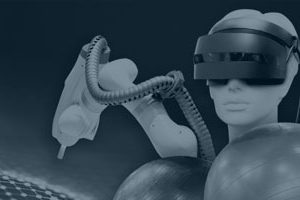Amidst the myriad challenges posed by soaring costs, environmental impacts, and patient adherence issues, the landscape of drug delivery has been fundamentally shifted in the aftermath of COVID-19. This period has witnessed a remarkable surge in the adoption of smart drug delivery platforms, seamlessly integrating connectivity and wearable technologies. An evolution that presents fresh opportunities for transformation within the field. Are you cruising down the MedTech innovation highway, tackling these challenges? This blog serves as your guiding compass in navigating the dynamic journey toward sustainable solutions in drug delivery innovation.

Revolutionizing patient care: the evolution of smart drug delivery systems
Step into the realm of innovation! Just over 5 years ago, a groundbreaking milestone unfolded with the launch of the first FDA-approved connected smart inhaler. This marked a new era in healthcare technology, where the convergence of low-power electronics, advanced sensors, and connectivity is reshaping patients’ experience. Imagine the possibilities: these cutting-edge technologies are more than gadgets, they’re revolutionizing the patient’s well-being and how they interact with their treatment care.
Advanced sensors delicately measure physical parameters like activity with accelerometers, body temperature, and even physiological markers with biosensors. Ultimately paving the way for enhanced patient safety, outcomes, and personalization. With every breath, patients are empowered to take control of their well-being like never before. And it doesn’t stop there. These innovations aren’t just about convenience, they’re about safety too. By leveraging smart technology, we’re addressing key issues like unauthorized medication use and ensuring therapy adherence. Take, for instance, Ability MyCite – a groundbreaking solution that monitors depression treatment using a smart pill and wearable platform.
Amidst these advancements, a pressing question lingers: how can we harness the power of these technologies while minimizing their environmental impact? Join us on this journey as we explore how to create solutions that not only enhance patient care but also tread lightly on our planet’s resources.
Designing for sustainability
Addressing the ecological impact of drug delivery systems, particularly those incorporating electronics, is paramount in our field. Abandoning smart solutions, proven to fulfill critical needs and deliver unmet outcomes, is not a viable path forward. How then do we navigate this challenge?
The key lies in recognizing that device sustainability hinges on its integration within a broader ecosystem. Our approach must embrace this interconnectedness, embedding traceability from production to end-user (B2B2C) and eventually back (B2B2C(2B). This not only facilitates recycling or proper disposal but also directly benefits patients. For example, integrating sensors to ensure drug integrity along cold supply chains enhances patient safety. Yet, such advancements demand meticulous attention to data privacy, prompting the exploration of technologies like blockchain (see Verhaert Digital). By combining intelligent devices with robust recycling strategies, we chart a course toward sustainability in drug delivery, forging new value chains, and enhancing profitability. Inspirations from initiatives like Litterbits or Nanopores recycling scheme guide our endeavors.
While enabling recycling is crucial, we must also prioritize the recyclability of our products. Minimizing the use of materials challenging to recycle, such as pure polymers and metals in single-use components, is imperative. Strategically defining the split line between smart, critical, and non-critical components can significantly reduce the environmental footprint. Embracing recycled materials, exemplified by the integration of pulp injection molding in auto-injections, underscores our commitment to sustainability. Streamlining component count, as exemplified by Haselmeier’s award-winning Picojet auto-injector with just 8 components, further exemplifies our dedication to eco-conscious design.
Sustainability in drug delivery: imperative progress
In conclusion, the journey toward a sustainable drug delivery ecosystem presents both formidable challenges and indispensable imperatives. Our exploration through this blog underscores how the infusion of intelligent technologies into drug delivery systems has revolutionized patient care, offering unparalleled levels of safety, customization, and adherence. Nevertheless, we cannot afford to ignore the environmental impacts of these cutting-edge systems.
The key to sustainable advancement lies in conceptualizing each device as part of a larger ecosystem, where every facet, from inception to disposal, warrants meticulous consideration. By embracing integrated methodologies that prioritize traceability, recyclability, and the utilization of eco-conscious materials, we can alleviate the ecological footprint of these devices. Embracing advanced technologies like traceable sensors and blockchain for data management, alongside the exploration of pioneering materials such as pulp injection molding, heralds progress in the right direction.
Furthermore, the industry must persist in innovating to streamline the complexity and component count of drug delivery devices, as exemplified by the elegance of Haselmeier’s Picojet. Such innovations not only diminish the environmental impact, they also showcase the potential for refined, effective design in life sciences technology. Reach out to us to delve deeper into the artistry of integrating sustainable design into your drug delivery device.
Looking ahead, it becomes abundantly clear that sustainability in drug delivery transcends mere choice – it emerges as an imperative. Learning from other industries, perpetually innovating, and maintaining a holistic view of the drug delivery ecosystem, enables us to ensure that the advancements in patient care don’t come at the expense of our planet. The future of drug delivery isn’t just about being smarter and interconnected, it must also embrace eco-friendliness and be more sustainable.
In the next blog post, we’ll discuss the changing landscape of the drug discovery market – from discovery to administration! Stay tuned to learn how technology is changing the way businesses interact.




